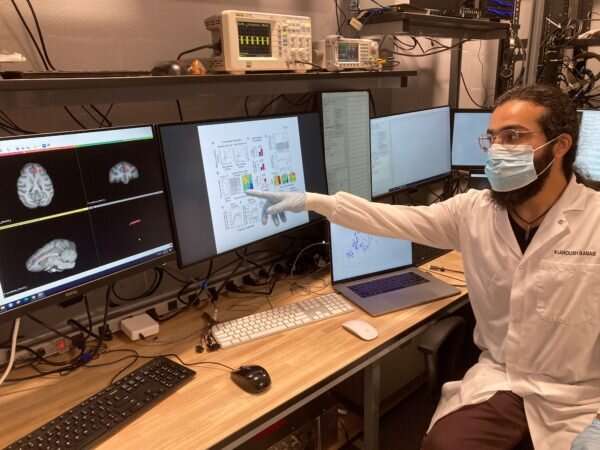Neuroscientists identify the brain cells that help humans adapt to change

There are 86 billion neurons, or cells, in the human brain. Of these, an infinitely small portion of them handle cognitive flexibility—our ability to adjust to new environments and concepts.
A team of researchers with interdisciplinary expertise in psychology, informatics (the application of information science to solve problems with data) and engineering along with the Vanderbilt Brain Institute (VBI) gained critical insights into one of the biggest mysteries in neuroscience, identifying the location and critical nature of these neurons.
The article was published in the journal Proceedings of the National Academy of Science (PNAS) on July 13. The discovery presents an opportunity to enhance researchers' understanding and treatment of mental illnesses rooted in cognitive flexibility.
Brain circuits created by these neurons have led to an evolutionary advantage in the ability of humans to adapt to changing environments. When these neurons are weakened, people may have trouble adjusting to changes in their environment including difficulty in overcoming traditions, biases and fears. Typically, people oscillate between repeating rewarding behavior and exploring newer and potentially better rewards. The cost-benefit ratio of repeating to exploring is an equation that the brain is constantly working to resolve, particularly when there are changes to a person's environment. A lack of cognitive flexibility results in debilitating mental conditions.
The consequences of this research could be multifold. "These cells could be part of the switch that determines your best attentional strategy," said Thilo Womelsdorf, associate professor of psychology and computer science, and the paper's principal investigator. "Weakening these brain cells could make it difficult to switch attention strategies, which can ultimately result in obsessive-compulsive behaviors or a struggle to adjust to new situations. On the opposite end, if such a switch is 'loose' attention might become 'loose' and people will experience a continuously uncertain world and be unable to concentrate on important information for any amount of time."
The researchers hypothesized that within the area of the brain that helps people learn fine motor skills like playing an instrument, there exists a subregion that could enable the same flexible processes for thoughts.
The group of brain cells, located below the outer cortical mantle in the basal ganglia, were identified by measuring the activity of brain cells during computer-simulated real-world tasks. To mimic many real-world situations the researchers, including scientists from the Centre for Vision Research at York University, developed a simulation to present more than one object at a time and changed what was rewarded. This created flexible learning as to which objects are linked to a reward through trial-and-error. By measuring the activity of brain cells, the team observed an interesting pattern: brain cell activity was heightened amid change and diminished when confidence in the outcome grew. "These neurons seem to help the brain circuits to reconfigure and transition from formerly relevant information, and a tenuous connection to attend to new, relevant information," said Kianoush Banaie Boroujeni, the study's first author and Ph.D. candidate in the Womelsdorf lab.
"There is a technological revolution in neuroscience," said Lisa Monteggia, Barlow Family Director of the Vanderbilt Brain Institute and professor of pharmacology. "The ability to use technology to control a single cell with molecular and genetic tools can only work when scientists know where to look. Dr. Womelsdorf and his collaborators have given us the ability to do such work and significantly move the field of neuroscience forward."
More information: Kianoush Banaie Boroujeni et al. Fast spiking interneuron activity in primate striatum tracks learning of attention cues, Proceedings of the National Academy of Sciences (2020). DOI: 10.1073/pnas.2001348117



















